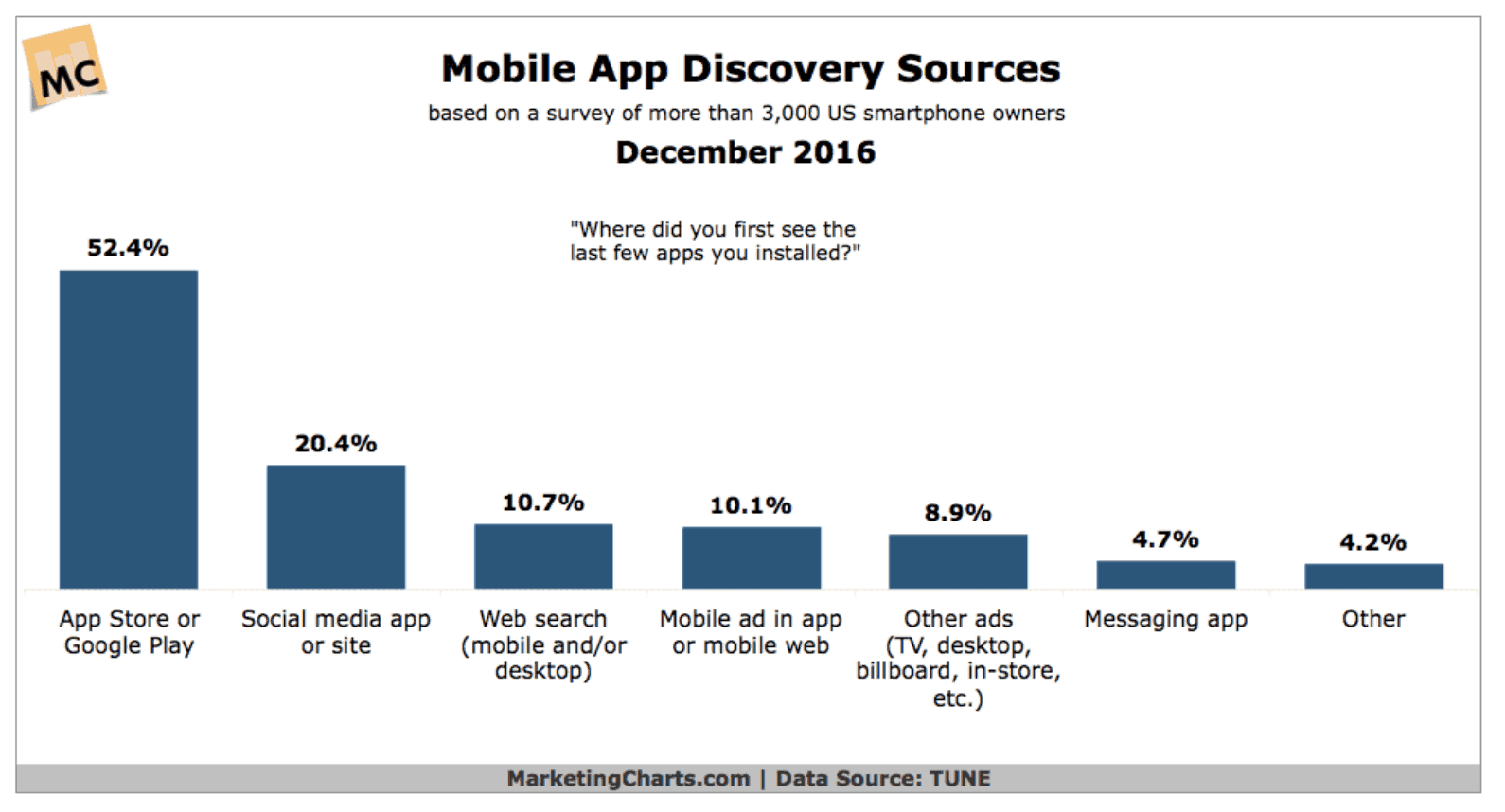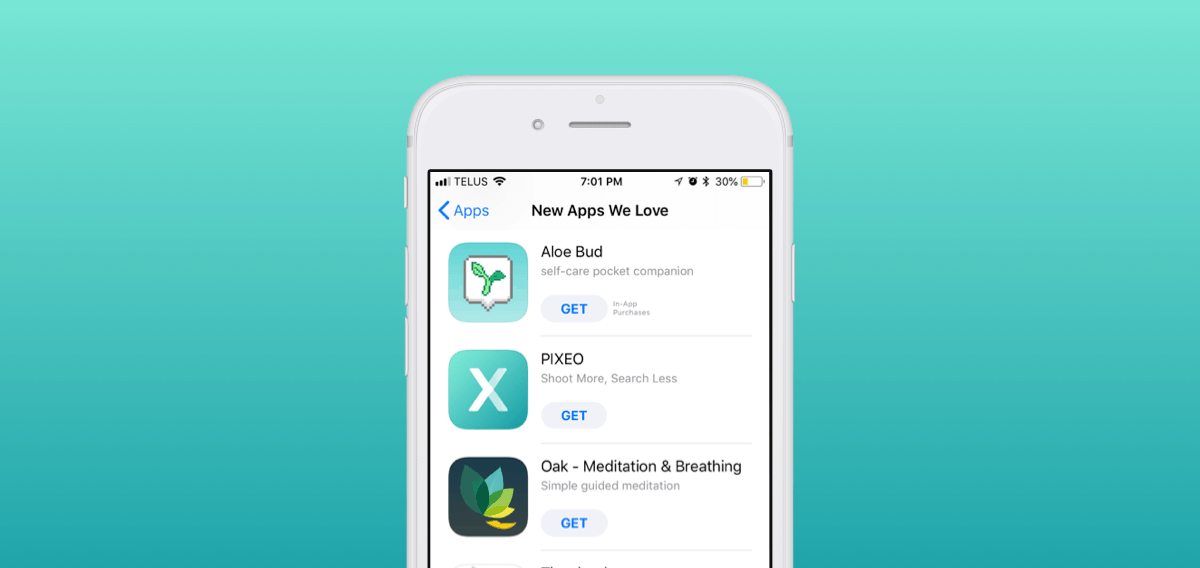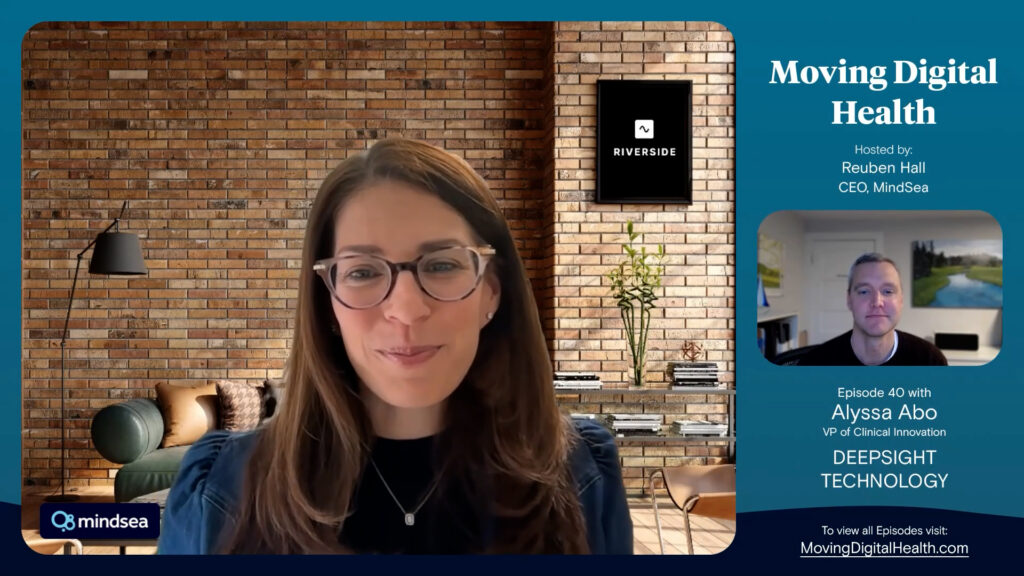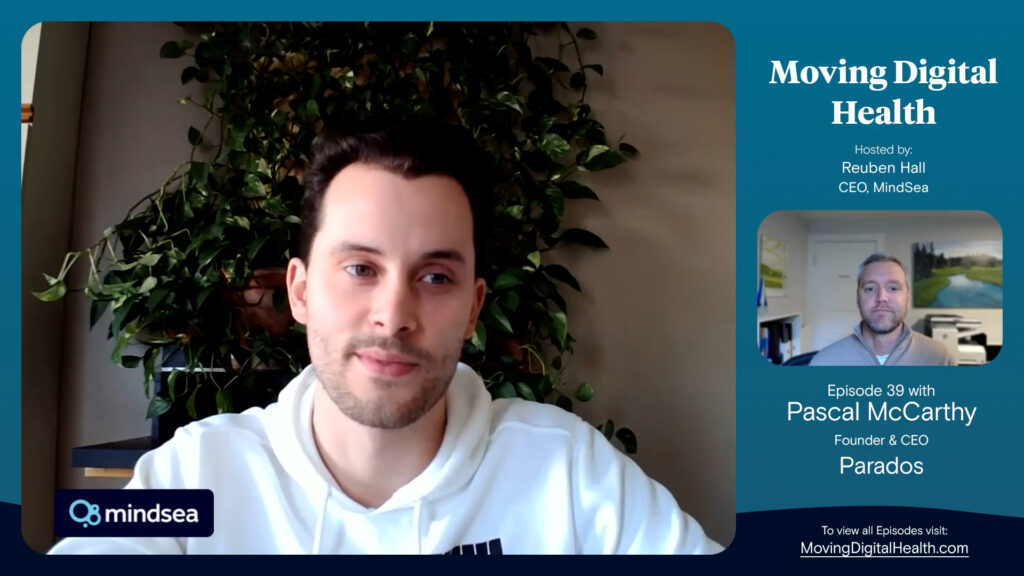You’ve spent months planning and designing your app. You’ve interviewed users, conducted testing and fixed bugs, and now you’ve finally arrived at a beautiful mobile masterpiece.
But you didn’t go through all that just for your app to sit there and look pretty.
Building and publishing an app is the hard part, right? Well, it’s certainly hard. But an even harder part comes next: Now you’ve got to drive downloads.
Studies have shown that most people discover new apps by browsing the app store:

That’s good to know. It means people are in the app store actively looking for apps, but how can you ensure that they come across your app and not a competitor’s? The real question is: How do you make your app stand out?
Let’s talk about the Apple App Store specifically for a minute. Amidst the thousands and thousands of apps that live there already—not to mention the thousands more that will be added in the next month—how does a new app on the market get in front of its desired users?
We also wanted to know the answer to this question, so we contacted the experts. We asked 10 app store optimization experts to share the ASO techniques or best practices that will get you noticed by potential users. Here’s what our experts had to say:

Aaron Watkins, President of Appency
My advice for someone who is doing ASO on their own would be to sign up for an App Store Search Ads account. Using that, you can see what sort of traffic different keywords get directly through Apple for free, without paying for any additional ASO tools.
Even better, if you cut and paste the keywords [on your list] into Excel as text, the blue bar that shows approximate search volume will turn into a percentage with real meaning. You have to assume any keyword that comes up with 5% [search volume] is actually 0%, as there is never anything less than 5% reported.

Shane Moore, Operations Manager at Redbox Mobile
Do not overthink it.
ASO is about attracting the best customers for your business. Think quality over quantity. If you’re a subscription app, 1,000 downloads mean nothing if the users do not subscribe.
So, when thinking about ASO, think about the conversions you can create. A title and subtitle should utilize keywords related to your app but should also flow nicely to a sentence that tells [the user] exactly what the app is about. For instance, The Wall Street Journal (Title), World Business & Market News (Subtitle). In two sentences, you know the name of the app and exactly why you need to download it. The keywords all link together to allow you to rank for some really sought after keywords, such as Business News, World News and Business Market News.
When you add in your key-string with other highly relevant terms such as Stocks, Shares and Headlines, you will quickly see how this builds a solid strategy for acquiring high-value users.
The second part to this is thinking about paid search activity. Markets are often hard to break into, and with millions of apps competing, you need to make sure your ASO strategy on either Android or iOS is in line with any paid search activity. This will allow you to buy adverts for crucial keywords, and works hand in hand with your organic work to improve your relevance in the app stores.

Reuben Hall, CEO of MindSea
An engaging app preview video gives you a huge advantage over the competition. It really stands out in search results and gives users a great first impression of what it’s like to use your app. Keep it simple and easy to follow while showcasing the most visually rich experiences in the app.
If you don’t know where to start in designing an app icon, take a moment to browse the App Store. Your eye will naturally be drawn to the icons that have simple elegant shapes with bright, contrasting colours.
Here are a few tips when creating an app icon:
Keep things simple. With the nature of the icon being viewed on a mobile device, you need to think small. Geometric shapes, thick lines, and high contrast colours can all help your icon stand out without adding visual clutter.
Don’t label slap. Ever hear of trying to fit a square peg into a round hole? Avoid squeezing your company name or logo into the app icon, especially if it’s a long name.
Take your time. Think of your app icon as a preview of the beautiful UX that your app has to offer. It will need to convince users to download your app in a sea of hundreds of thousands of others, so take the time to iterate, get feedback from peers and potential users, and build a memorable brand for your users.
Be consistent. You want users to become familiar with your app icon, so ensure the design has longevity, and try not to change it too often. Let your icon become a natural extension of your brand.

Jiri Chochlik, ASO Executive at AppAgent
Learn how to do in-depth keyword research. Sometimes it can take up to many hours of research. It is not an easy process, but if done right it’s worth it. You can check reviews of similar apps to yours to get some inspiration.
Spend time analyzing who your real competitor is. Developers and publishers tend to target wrong keywords because they don’t understand who their competitor is and, therefore, they have a problem [trying] to reach a top 10 rank.
Don’t rely on ASO tools only. Many things—for example, analyzing the difficulty of keywords—are much better done manually than just checking it in ASO tools.
Nicholas Duddy, Founder of Miratrix
You’ll need volume or, to put it another way, you need install velocity (installs/time). If you’re working with small UA budgets, it’s best to batch your activity to increase your install velocity. An increased rate of install over a short window of time will improve your app’s visibility in the short term, which will then allow you to start testing keyword cohorts and listing page optimisation.
Another key factor is user ratings in the App Store. If your app is below 4 stars, you’re going to struggle to maintain visibility as a low rating puts other users off installing, in turn reducing your install volume and velocity.
Stephanie Munn, Product Designer at MindSea
App Store screenshots give users a first look into what your app is all about. Grab your users’ attention with compelling images that highlight the main benefits of the app and how it will improve their lives. Use this as an opportunity to tell a story by carefully crafting the order of screenshots and adding a description to each one. Keep these short and sweet—a simple phrase will do.
Ken Clements, VP of Marketing, Apptentive
Half of all new apps are discovered through app store search results. To make your app discoverable in these searches, you need to meet your customers where they are. This means understanding the marketing channels and keywords that eventually lead to downloads.
Chances are, you have a very compelling way of describing your app. But this only helps with conversion after the customer has found your app’s product page. To first drive customers to your page, you need to optimize for the way they describe your app. No matter how revolutionary your “dual-axis REM and ambient noise accelerometer” is, your potential customers will never discover it if their first inclination is to search for a “sleep tracker.”
Here are four ways to learn your customers’ lingo:
- Ask them. Wherever you are in development, it pays to communicate with your customers. By establishing a pre-launch focus group of a select group representative of your target audience, or by analyzing customer feedback, reviews, and survey responses post-release, you can get an idea of your customer’s natural language.
- Compare search volume and competitiveness. Although the app stores don’t share information on search statistics, you may be able to extrapolate some keywords from web searches. There are plenty of free tools, like Google’s Keyword Planner, that provide search volumes and competition levels for individual keywords. As in the industry of search engine optimization, keywords with high search volumes and low competition are your lowest hanging fruits.
- Analyze market leaders. Is there an app that currently dominates your niche? If so, it might help to scan its product page for keywords as its popularity can be at least partially attributed to its ease of discovery. Of course, competing head-on for the same keywords will be a challenge, but this analysis may help you discover some missed opportunities.
- Use a keyword research tool. Several automated tools attempt to do the keyword research for you by scanning your product description. While they don’t provide personalized results, these tools can be a good place to start. We’d recommend trying out AppTweak, SensorTower, or any of the other ASO tools mentioned in this guide.
Alex Ferrari, Client Experience at MindSea
One of the most underrated, yet important, elements of ranking in the App Store is customer reviews. At MindSea, we often encourage our clients to include strategic call-to-actions throughout their app experience that encourage positive reviews. We also promote the idea of asking for reviews via social media channels and various marketing outlets. In doing so, there’s an increased likelihood of receiving positive feedback, and that can have a real influence on how you’re positioned and rank in the App Store.

Jake Sion, Chief Operating Officer at Transit
You can leverage different languages in your app’s description to rank for “extra keywords.” For example, in the U.S., you can set up a description in both English (U.S.) and Spanish (Mexico)—in Canada, both English (Canada) and French (Canada). So, if you include a keyword only in French (Canada), your app will still rank if the term is searched for on the English (Canada) App Store. Each time you configure an app to have a new language, you get another 100 characters of keywords to use.
So there you have it! Building your app is one thing, but you need to have a plan for launching your app successfully and getting it in front of your target users. Downloads, subscriptions and engagement—that’s how you’ll achieve your business goals over time.
A common theme echoing through our experts’ advice is a focus on keywords. You need to have a clear understanding of what your target audience is looking for when they go to the app store to browse. After that, it’s all about conversions and customer loyalty—you want to please your audience so much that they leave rave reviews, spread awareness by word of mouth and, as a result, help drive your app to the top of the search page.
Bottom line: How you market your app once it’s published is crucial to its success, and ASO is a huge part of that. If you want to know more about what to do before you publish, check out 8 Things To Do Before You Publish an App To The App Store, featuring a handy infographic you can reference again later.






